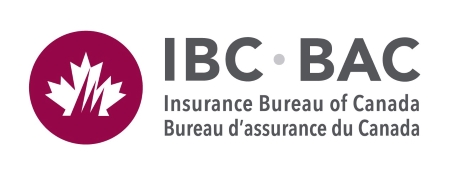New report shows 81% increase in regulatory compliance costs at a time when Canada grapples with dragging productivity
TORONTO, Oct. 30, 2025 /CNW/ - Regulatory compliance costs across Canada's property and casualty (P&C) insurance sector have surged by 81% since 2022, according to a new Regulatory Compliance Cost Survey by Insurance Bureau of Canada's (IBC). That's nearly 13 times the rate of inflation and six times greater than the industry's own revenue growth.
The survey reflects input from 24 of IBC's member companies, representing 61% of the Canadian P&C market, and covers calendar years 2022–2024. Key findings include:
- Total regulatory compliance costs reached $753 million in 2024, up from $416 million in 2022 – an 81% increase over just two years. Respondents said they expect costs to go up further in 2025.
- Internal labour accounted for nearly three-quarters of total costs, including a 26% increase in full-time employees required to comply with growing regulatory pressures.
- Insurers continue to spend significant time on both federal and provincial compliance requirements. The largest share – 40% – was spent with respect to compliance requirements of the federal solvency regulator, the Office of the Superintendent of Financial Institutions (OSFI).
"As Canada grapples with lagging productivity and seeks ways to strengthen its economy, taking a serious look at our fragmented and increasingly complex regulatory system makes good sense," said Celyeste Power, President and CEO, IBC. "While Canada's regulatory system is increasing in cost and complexity, other countries are streamlining to drive productivity and growth. If Canada is serious about increasing its competitiveness globally, we need a more modern approach to regulation that protects consumers while enabling innovation and growth."
IBC's findings mirror those of a recent report from the C.D. Howe Institute, "Pruning the Rulebook: Canada's Financial Regulatory Scorecard, Year Two," which found that the share of total labour costs devoted to compliance-related activities across the broader financial sector was 16% in 2019, and rose to 22% in 2024. The report warns that Canada's regulators continue to prioritize stability and protection at the expense of innovation and competition – a philosophy increasingly out of step with those of their international peers.
The consequences of regulatory burden are significant. According to Statistics Canada, between 2006 and 2021, the number of federal regulatory requirements grew by 37%, a trend that is estimated to have reduced Canada's GDP growth by 1.7% and slowed employment growth by 1.3%. Meanwhile, Canada's global competitiveness is far from impressive: According to the World Economic Forum, Canada ranks 38th on burden of government regulation and 54th in internal labour mobility (1st is best on both measures).
"IBC recognizes that regulation is essential to maintaining market integrity and protecting consumers," said Power. "But it's a matter of balance. The harsh irony is that the effort to protect consumers can end up having the opposite effect."
The timing of the latest findings from IBC and C.D. Howe is critical. The federal government has pledged that its upcoming budget will "deliver a clear plan to build Canada into the strongest economy in the G7." IBC believes that reducing regulatory burden in the financial sector is a key step toward achieving that goal.
"Canada stands at a crossroads," added Power. "Other jurisdictions, including the European Union, United Kingdom and Australia, have announced reforms aimed at reducing regulatory burden and modernizing oversight frameworks. If Canada doesn't act, we risk falling further behind. A harmonized and balanced regulatory approach can strengthen our economic resilience, but it will require leadership, collaboration and a willingness to rethink how we regulate in a changing world."
IBC continues to advocate for reforms that include refocusing regulators' mandates to promote competition and innovation, harmonizing oversight between federal and provincial regulators, and updating capital rules to allow for greater investment flexibility, such as the ability to invest in Canadian infrastructure. All of this would ultimately serve consumers and the Canadian economy.
About Insurance Bureau of Canada
Established in 1964, Insurance Bureau of Canada (IBC) is the national industry association representing Canada's private home, auto and business insurers. Its member companies make up the vast majority of Canada's highly competitive property and casualty (P&C) insurance market.
As the leading advocate for Canada's private P&C insurers, IBC collaborates with governments, regulators and stakeholders to support a competitive environment for the P&C insurance industry to continue to help protect Canadians from the risks of today and tomorrow.
IBC believes that Canadians value and deserve a responsive and resilient private P&C insurance industry that provides insurance solutions to both individuals and businesses.
For media releases, IN Focus articles, or to book an interview with an IBC representative, visit ibc.ca. Follow us on LinkedIn, X and Instagram, and like us on Facebook. If you have a question about home, auto or business insurance, contact IBC's Consumer Information Centre at 1-844-2ask-IBC. We're here to help.
SOURCE Insurance Bureau of Canada

Media Contact: Brett Weltman, Manager, Media Relations, IBC, [email protected]

Share this article